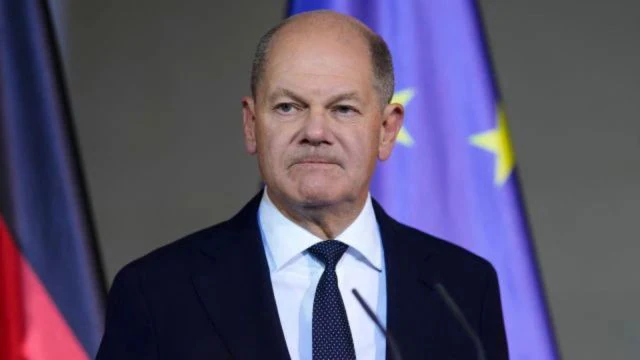Share
Rajesh Sharma is a mergers-and-acquisitions strategist at Itochu, one of Berkshire Hathaway’s Japanese portfolio companies. The views expressed are his own. Last year, the U.S. Federal Reserve cut its policy rate twice: first by 50 basis points in September, then by 25 basis points in November. These were the Central Bank’s first-rate cuts, since concluding its previous series of rate hikes in early 2023. Still-elevated inflation means the Fed is now projecting fewer rate cuts than previously expected, but it remains that the Central Bank has a somewhat new-found dovish stance. This sets up expectation for a healthy mergers-and-acquisitions market in the U.S. in 2025. History and economic theory teach that lower interest rates have an encouraging effect on deal making. For buyers, falling rates lower the cost of capital and make deals easier to close. For sellers, they provide more optionality in the form of a larger pool of willing buyers. The Fed cut its rate at the tail end of a year during which M&A activity broadly recovered after a slow 2023. That year, M&A activity markedly decreased, falling 11% compared with 2022 levels and 49% compared with 2021 levels. It’s hard not to notice the correlation between these declining levels of deal making and the Fed’s hawkish interest-rate policy. The Central Bank began hiking interest rates in 2022. The last of its hikes in the previous cycle concluded in the spring of 2023. The cyclical high in rates coincided with lows in deal making, while the prior 2021 high in deal making correlated with historically low rates.
Indeed, we’re already seeing evidence that deal making activity is picking up. Although Mergermarket reported that second-quarter M&A activity declined slightly from the prior year’s Q2, investment-banking fees increased in the period. For example, Bank of America Corp. and Citigroup Inc.’s IB fees increased 18% and 44% in Q2. Conventional wisdom is that most of this growth in IB fees was attributable to debt issuance, but in JPMorgan Chase & Co.’s third-quarter earnings call, the Bank’s Chief Financial Officer did note that advisory fees were up 10% and that equity-related fees were up 26%. He also said that JPMorgan’s investment banking fee growth was “driven by the acceleration of the closing of some M&A transactions.” In other words, a ramp up in M&A activity is already under way, and the Federal Reserve’s dovish policies indicate that it will continue into 2025. Most obviously, lower financing costs make it easier and cheaper to close deals than would otherwise be the case. There are indirect effects of dovish monetary policies, too. As rates fall, businesses invest more; that can lead to higher employment, more consumer spending and ultimately, more profits. The combination of lower financing costs and a more prosperous consumer tends to encourage M&A.
For proof of this, we need only look three years back in history. In 2021, M&A activity hit record levels, with notable deals including AT&T Inc.’s acquisition of Discovery from TimeWarner Inc., and Canadian Pacific Railway’s merger with Kansas City Southern. Those two deals alone were worth US$70.2-billion combined and many other large ones closed that year. All this took place despite COVID-19 lockdowns being an on-again off-again interruption throughout the year. If you look at the monetary policy side of the picture, you can see why it happened: the federal funds rate went as low as 0.08% in 2021. Adding to the stimulating effect of lower rates in 2025 will be President Donald Trump’s second term. He is generally thought to be more M&A-friendly than president Joe Biden was in the past four years. During Mr. Biden’s term, he scuttled deals in banking, such as the TD Bank-First Horizon deal, and attempted to block deals in other sectors, such as the Albertsons-Kroger deal. Mr. Trump, meanwhile, was generally quite permissive of M&A in the financial services, energy and industrial sectors during his first term. It is expected that he will take the same approach over the next four years. Partially for this reason, Goldman Sachs sees deal activity increasing by 20% in 2025. Certain business that stands to gain from this increased M&A activity: the category that tends to become more attractive during periods of falling rates is capital intensive, high-debt businesses. When rates decline, such companies’ variable-rate debt immediately becomes cheaper. Their fixed-rate debt also becomes cheaper, if it comes up for refinancing in a lower rate environment. If the Fed keeps its dovish stance through 2025, then heavily leveraged sectors such as utilities, telcos and real estate developers could become attractive M&A targets.
Source : https://www.theglobeandmail.com/business/commentary/article-2025-is-set-to-be-a-big-year-for-mergers-and-acquisitions-in-the/
Related Posts
SEARCH SMECONNECT-DESK
RECENT POST
- The challenges facing SMEs
- How to Overcome Common Challenges in Export Finance?
- INTERACTIVE MEETING WITH Chairman & Managing Director Larsen & Toubro Limited
- Shri Chandrakant Salunkhe Recognized for Transforming the SME & Manufacturing Landscape at Udyog Sammelan organised by ZEE media
- India’s finished steel imports from China hit 7-year high in April-Dec









